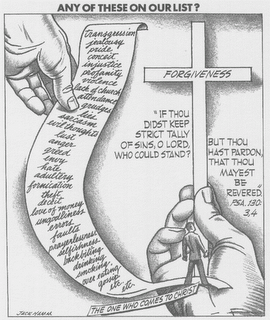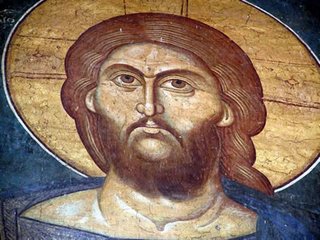LUTHER 1527 Athanasius Insists


LUTHER 1527
Bread and wine are eaten and drunk for the forgiveness of sins; that is, because Christ ordained them to be eaten and drunk in order to keep his remembrance, it is proper to call this an eating and drinking of the forgiveness of sins, since in connection with it we should remember that forgiveness and do as he says afterward, “Do this in remembrance of me.” Just as one drinks wine to seal a sale, to show that it was a fair and just transaction which should be kept in remembrance and honored.- Martin Luther
Athanasius Insists
The Nicene doctrine refuses to swerve from the monotheistic basis, and stands between Sabellianism and tritheism; though it must be admitted that the usage of oujsiva and uJpovstasi"; still wavered for a time, and the relation of the consubstantiality to the numerical unity of the divine essence did not come clearly out till a later day. Athanasius insists that the unity of the divine essence is indivisible, and that there is only one principle of Godhead. He frequently illustrates the relation) as Tertullian had done before him, by the relation between fire and brightness, or between fountain and stream; though in these illustrations the proverbial insufficiency of all similitudes must never be forgotten. “We must not,” says he, “take the words in John 14:10: ‘I am in the Father and the Father in Me’ as if the Father and the Son were two different interpenetrating and mutually complemental substances, like two bodies which fill one vessel. The Father is full and perfect, and the Son is the fulness of the Godhead.” “We must not imagine,” says he in another place, “three divided substances in God, as among men, lest we, like the heathen, invent a multiplicity of gods; but as the stream which is born of the fountain, and not separated from it, though there are two forms and names. Neither is the Father the Son, nor the Son the Father; for the Father is the Father of the Son, and the Son is the Son of the Father. As the fountain is not the stream, nor the stream the fountain, but the two are one and the same water which flows from the fountain into the stream; so the Godhead pours itself, without division, from the Father into the Son. Hence the Lord says: I went forth from the Father, and come from the Father. Yet He is ever with the Father, He is in the bosom of the Father, and the bosom of the Father is never emptied of the Godhead of the Son.”
HISTORY OF THE CHRISTIAN CHURCH Schaff Volume 3 NICENE AND POST-NICENE CHRISTIANTY A.D. 311-600
(Pages 656-658)

0 Comments:
Post a Comment
<< Home